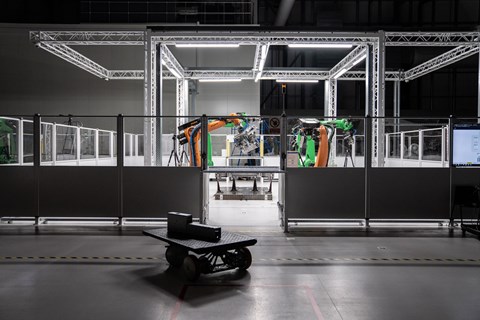► UK electric van maker Arrival goes into administration
► Company no longer on New York stock exchange
► Jobs at risk
UK-based electric vehicle start-up Arrival has gone into administration a week after it was removed from the New York stock exchange.
The company has called in Simon Edel, Alan Hudson and Sam Woodward of EY-Parthenon’s Turnaround and Restructuring Strategy team after it failed to secure emergency funding. As many as 172 jobs are at risk as the Arrival UK Ltd and Arrival Automotive UK Limited subsidiaries are impacted. The other arms under the Arrival company are continuing to operate outside of the administration process.
The administrators will look to sell off elements of the business, including the electric van platform, software, intellectual property and R&D assets as it seeks to repay creditors.
Previous troubles
Arrival has faced several problems in recent years, and the entering into administration represents a fall from grace for the company that was once briefly valued at £9bn on the stock market.
The 2022 Q2 earnings revealed that the company had cut back its delivery goals to just 20 vans for 2022, which was down from around 400 to 600, which was the aim as recently as April in the same year.
It reported losses of $89.6m (£73.8m) in the second quarter of 2022, which was up from $56.2m (£46.2m) in the same quarter in 2021. As well as the delayed opening of the Charlotte microfactory, the company had reportedly paused its car and bus plans.
That said, the Arrival Bus had reached the stage where it is operating on public roads, ferrying employees from site to site.
Tell me more about Arrival
The Banbury-based operation was designing and engineering the future of all-electric commercial vehicles and buses. It was named the number one start-up to work for in the UK in 2020 by LinkedIn, orders for the van were flooding in from the likes of UPS and Royal Mail, and First Group – one of the biggest bus operators in the UK – was in talks with Arrival, too.
Hyundai Motor Group invested €100m (£85m) in Arrival to gain access to its EV engineering. ‘It’s the culmination of six years of hard work, and the team feels incredibly proud,’ says Tom Elvidge at the time, Arrival’s senior vice-president of vehicle programmes.
Its van, Arrival’s first major project, was designed in a range of shapes and sizes, with battery capacities ranging from 44 to 133kWh. Arrival estimated the van can do up to 215 miles on a single charge – plenty for a Royal Mail operative to perform a number of local delivery rounds, for example – and carry up to two tonnes.
And then there’s the bus. The design is modular, with different lengths and battery ranges easily integrated into the matrix. Flat surfaces and sanitation stations (the bus was revealed during the first wave of the Covid pandemic in 2020), along with wall-mounted panels with contactless payment functions, allow passengers to get on and off smoothly. Real-time updates via GPS tracking can be sent to your phone while you wait.

How did a start-up like Arrival offer such flexibility in its products? It’s all down to the way they’re built. ‘We’ve designed our own components on a modular, grid-based system for simple assembly,’ says Elvidge. ‘Each component can be used across all of Arrival’s platforms, allowing manufacturing at scale and rapid development of new vehicle types.’
Factories, but made micro
The start-up also isn’t one for centralising its production; instead, Arrival was aiming to set up several ‘microfactories’. The plan was to buy up warehouse space near where demand is highest, to produce vehicles locally, transforming the space into small production hubs for whatever vehicle is required using something Arrival calls ‘cell-based assembly’ – a small footprint of square space in the microfactory designed to build one vehicle from the ground up. No rolling production lines or tight time deadlines, just the set of components put together by both robotic arms and humans. There were set to be four in the world initially.
‘Cell-based assembly means we can create any vehicle from the portfolio, quickly being able to reconfigure the same plant to build different products,’ says Elvidge. ‘If demand for a particular product wanes, we can switch to a different one.

‘Microfactories make distribution and production cheaper, easier and more sustainable,’ he adds. ‘They’re designed to be long-lasting facilities and, combined with Arrival’s in-house hardware and software, will lower costs to such an extent that our products will be competitive on price with fossil-fuel equivalents, and have a much lower total cost of ownership.’
The next project? An electric car, designed purely for taxi use. Arrival is working with Uber, the ride-hailing giant, to design the ultimate EV for its drivers and passengers.
‘Ride hailing plays such a key role in creating accessible and efficient transport systems,’ says Elvidge. ‘An integrated transport ecosystem will create cleaner solutions for people living in cities.’
All this looks uncertain with the administration announcement, however.